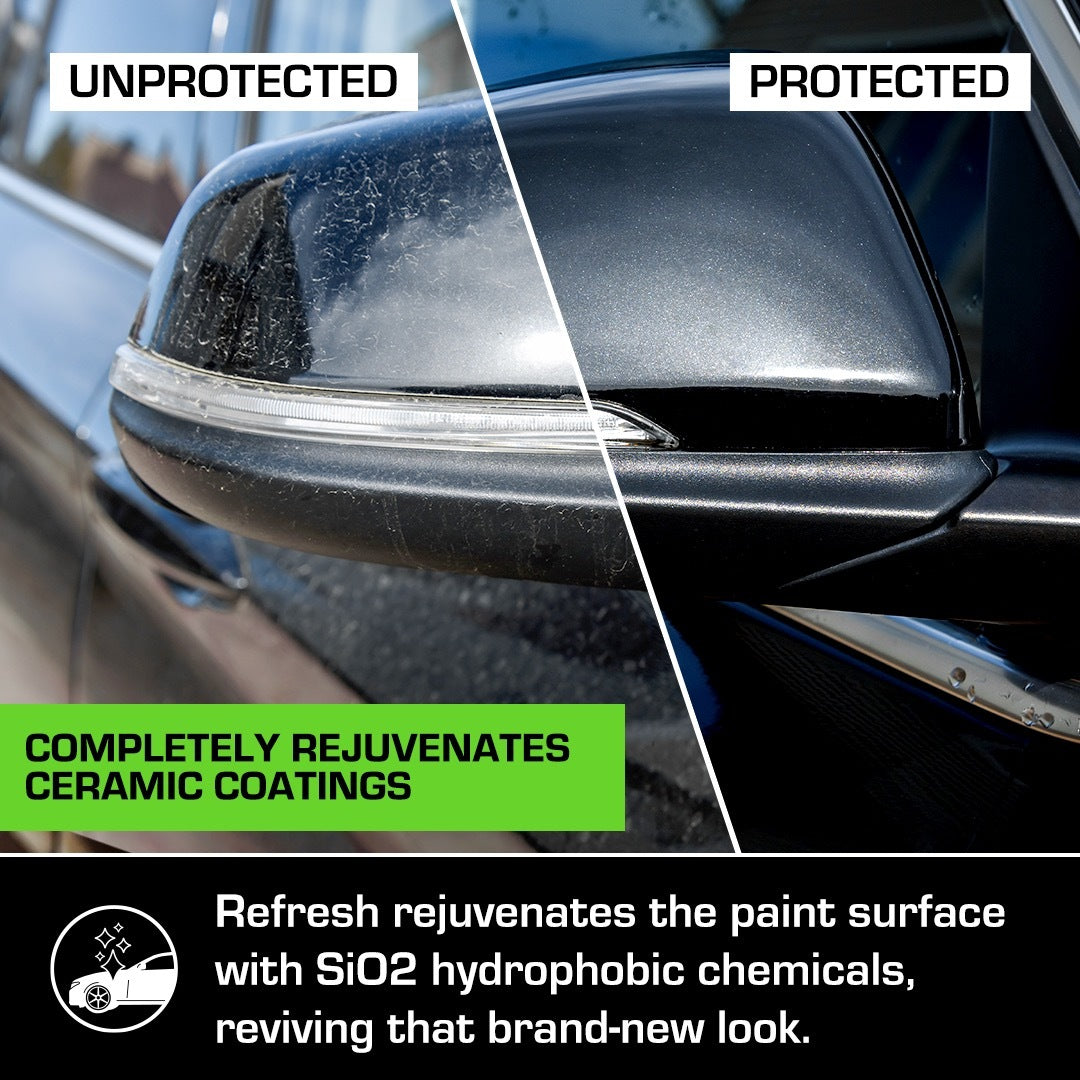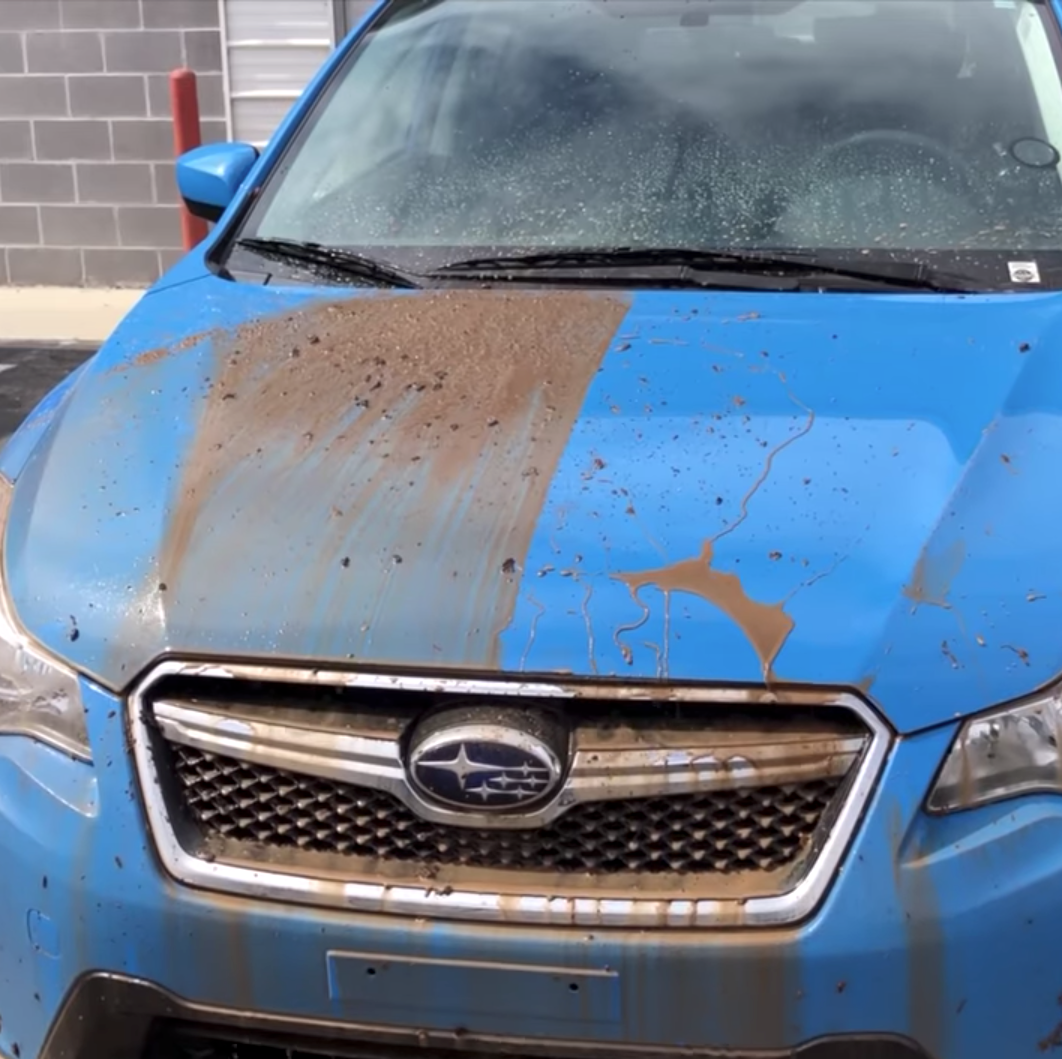A buyer’s guide to finding affordable Ceramic Coating Newark
Checking out the Scientific Research Behind Car Ceramic Coating and Its Protective Qualities
The scientific research of car ceramic coating provides a remarkable study in sophisticated auto protection. Made up mostly of silicon dioxide and polymers, these coatings create a robust bond with vehicle paint. This interaction boosts resilience versus environmental hazards while supplying hydrophobic advantages. However, the complexities of just how these finishes work and their long-term advantages remain less recognized. Unboxing these details discloses why ceramic finishes are ending up being a favored selection for vehicle care
What Is Ceramic Coating?
Ceramic coating is a fluid polymer that chemically bonds to the surface of a vehicle's paint. This sophisticated protective layer enhances resilience and uses remarkable resistance to ecological factors. Unlike traditional wax or sealants, which give short-lived defense, ceramic layers develop a long-lasting guard that can hold up against severe problems such as UV rays, acidic impurities, and severe weather condition. When used correctly, the coating forms a hydrophobic surface area, causing water to grain and slide off, which helps in maintaining the automobile's sanitation. Additionally, it offers boosted gloss and deepness to the paint, making the automobile show up more polished and vibrant. The application process typically includes comprehensive surface preparation, including cleaning and sprucing up, to guarantee peak bonding. Consequently, ceramic coatings are ending up being progressively popular among car fanatics and those seeking to shield their financial investments, assuring to keep the lorry's visual charm while lowering the frequency of upkeep.
The Composition of Ceramic Coatings
The complex formula of ceramic finishings mostly includes silicon dioxide (SiO2), which is obtained from natural resources like quartz and sand. This crucial component supplies the structure for the coating's longevity and protective qualities. Along with SiO2, ceramic coatings often include different polymers and additives that improve bond, flexibility, and resistance to environmental factors. These substances function synergistically to develop a durable obstacle against impurities such as dust, chemicals, and UV rays.Furthermore, some solutions include titanium dioxide (TiO2) or other nanomaterials, which can augment the coating's hydrophobic residential or commercial properties, leading to better water repellency. The accurate structure can differ greatly amongst manufacturers, influencing efficiency and long life. Ultimately, the combination of these components culminates in a safety layer that not only enhances the visual appeal of cars however additionally serves to extend their lifespan by shielding the surface area from potential damages.
How Ceramic Coatings Work
Recognizing exactly how ceramic finishes function includes discovering their chemical composition, which adds to their safety qualities. The application procedure is crucial for achieving perfect results, while long life and toughness aspects identify the coating's performance in time. Together, these aspects highlight the benefits and efficiency of ceramic coverings for lorry security.
Chemical Structure Explained
While lots of car owners seek lasting security for their vehicles, the chemical structure of ceramic finishings plays an important role in their effectiveness. These layers mostly contain silicon dioxide (SiO2), which is obtained from all-natural minerals. This substance creates a strong bond with the automobile's paint, developing a resilient, safety layer. Furthermore, numerous ceramic finishes contain titanium dioxide (TiO2), improving their hydrophobic residential properties and resistance to UV rays. The presence of polysiloxanes can even more improve flexibility and durability. Together, these components add to the coating's capacity to drive away water, dust, and contaminants, while additionally giving a high-gloss coating. Recognizing this chemical structure aids car proprietors value the durable security supplied by ceramic finishings.
Application Refine Review
Using ceramic finishings includes a precise procedure that ensures ideal bonding and security for the vehicle's surface area. Extensive cleaning and decontamination of the car's exterior are executed to eliminate dirt, gunk, and previous waxes. This step confirms that the surface is totally free from contaminations that can impede adhesion. Following this, the paint is usually polished to boost clarity and remove any kind of blemishes. When prepared, the ceramic coating is used in little sections using an applicator pad, enabling uniform protection. The coating is after that click here for info delegated treat, creating a solid chemical bond with the surface. Proper treating times and problems are critical, as they confirm the coating attains its maximum effectiveness and safety qualities.
Durability and Resilience Factors
Ceramic coverings are created to give resilient security with their innovative chemical make-up, which develops a robust obstacle versus environmental pollutants. The resilience of these coverings is affected by aspects such as the density of the application, the top quality of the product, and the problems under which the car is exposed. Top quality ceramic layers can last a number of years, resisting scratches, UV rays, and chemical spots. Proper maintenance, consisting of normal cleaning and regular reapplication, can further enhance long life. In addition, environmental factors like climate and direct exposure to contaminants can impact the lifespan of the coating. Overall, when applied and preserved correctly, ceramic layers offer extraordinary longevity, making them a preferred choice for car fanatics seeking to protect their car's appearance.
Hydrophobic Qualities and Water Repellency
Hydrophobic properties are a characteristic of quality car ceramic layers, significantly improving the vehicle's surface area efficiency. These layers create a molecular bond with the car's paint, resulting in a surface area that wards off water properly. When water enters call with a ceramic-coated surface, it grains up and rolls off, lessening the quantity of liquid that remains on the paint. This habits not only adds to an aesthetically pleasing look however likewise minimizes the buildup of impurities such as dust, gunk, and roadway salts.The enhanced water repellency brings about much easier cleansing and upkeep, as less effort is needed to eliminate unwanted substances. Furthermore, the hydrophobic useful link nature of ceramic layers helps in protecting against water spots, which can mar the finish of uncoated surface areas. In general, the incorporation of hydrophobic residential or commercial properties in ceramic finishes plays an essential duty in keeping the lorry's immaculate appearance while streamlining maintenance.
Protection Against Scratches and UV Damage
Car ceramic coverings use substantial security against scrapes and UV damages. The scratch resistance device develops a resilient layer that takes in influences, while the UV shielding advantages assist maintain the vehicle's paint integrity in time. Together, these attributes contribute to a longer-lasting and aesthetically attractive finish.
Scrape Resistance Device
Utilizing sophisticated modern technology, ceramic finishings offer a robust guard versus scrapes and UV damages, boosting the durability and appearance of lorry surfaces. The scratch resistance system of these finishings is credited to their distinct molecular structure, which develops a long lasting bond with the automobile's paint. This bond creates a hard, protective layer that can soak up influences and stand up to abrasions. Additionally, the smooth surface area of the coating reduces rubbing, making it hard for pollutants to adhere and create scratches. The chemical composition of ceramic coverings frequently consists of nanoparticles that reinforce the protective layer, additional boosting its durability. Subsequently, automobiles treated with ceramic coverings display significantly boosted scratch resistance contrasted to traditional wax or sealers, guaranteeing an immaculate coating gradually.
UV Protecting Advantages
The safety top qualities of ceramic layers prolong past scrape resistance to include substantial UV securing advantages. These coatings produce a robust obstacle that shows damaging ultraviolet rays, securing the car's paint and underlying materials. Long term exposure to UV radiation can result in fading, oxidation, and degeneration of the paint surface. By including ceramic finishings, lorry owners can successfully alleviate these risks, protecting the visual charm and stability of their vehicles. Additionally, the UV obstructing homes add to improved longevity, decreasing the regularity of painting and maintenance. Inevitably, the assimilation of ceramic layers supplies a thorough option for shielding lorries from the destructive effects of sunlight direct exposure, making certain a continual, vibrant look with time.
The Long life and Upkeep of Ceramic Coatings

Frequently Asked Questions
Can Porcelain Coating Be Applied to Any Sort Of Vehicle?
Ceramic coating can be used Full Article to various kinds of vehicles, including vehicles, vehicles, and motorcycles. However, surface preparation and compatibility with specific products are essential for optimal bond and effectiveness of the coating.
Just How Much Does Ceramic Coating Generally Expense?
Ceramic coating usually sets you back between $500 and $2,000, depending upon factors such as automobile size, coating quality, and specialist application. The financial investment can give durable defense and enhance the automobile's look over time.

Is Specialist Application Required for Finest Outcomes?
The requirement of expert application commonly relies on wanted outcomes. Experts usually guarantee appropriate surface prep work and application strategies, bring about suitable bonding and long life of the coating, which might be testing for unskilled individuals to accomplish.
Can Porcelain Coatings Be Removed or Fixed?
Ceramic finishings can be removed or repaired, though the procedure might call for particular solvents or methods - Ceramic Coating Newark. Proper removal is necessary to avoid damage to the underlying surface, highlighting the value of specialist support for perfect results
Exactly How Does Ceramic Coating Contrast to Traditional Wax?
The contrast in between ceramic coating and standard wax reveals that ceramic finishings offer remarkable durability, enhanced security versus environmental contaminants, and longer-lasting shine, while wax needs much more regular application and supplies less total resistance to damages.